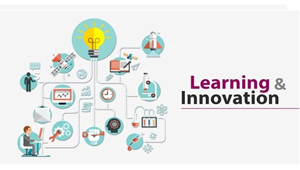
Virtual Reality (VR) is seen as a future technology, which gains an increasing importance in industry and research. The progress in this area is driven by the rapid growth of hardware and technology, for example new interaction tools and tracking systems. The technological advances and the growing availability of VR technology, like head-mounted displays (HMD), facilitate the access to universities because of their easier use and the decreasing costs of HMDs.
VR can be considered from different perspectives :
• focus on technological aspects (3D content)• VR as a new way of Human-Computer Interaction (HCI)
• Mental or psychological experience of VR
With regard to learning, mainly the second and third perspective is essential. In order to fulfill the students’ learning requirements, the communication and interaction between immersive hardware and students have to be improved.
VR technologies are attributed with an immersive effect, which initially is caused by technological effects. Immersion is the central element of VR, which distinguished VR from other Human-Computer interfaces or media. One central assumption in this context is that VR technology leads to greater immersion in the VE and in turn higher immersion leads to better learning outcomes.
To understand immersion, there are two existing perspectives of immersion: a technical and a user or mental perspective. The technology capability of immersion of a VR system implies that the user is surrounded by the VR so that barriers between the virtual world and the user have been removed. This leads to a greater level of user’s attention and focusing.
Considering the state of the art, it can be assumed that technologies, which have a greater level of immersion, lead to greater UX when users interact with the VE. The question arises to what extent immersion influences task performance in VLE and how immersion can support the learning process in a positive way. The fundamental idea is that students who learn by participating in the learning task with a higher sense of being in the environment may learn more deeply than students who learn by participating in the learning task as observers.”
Applying VR technologies in teaching and learning scenarios can further increase the students’ learning experience to a more immersive and engaging involvement in learning processes. The immersion into a virtual world offers students the potential to experience virtual objects and to interact with the environment. Thus, a constructivist perspective of the learning process can be encouraged, in which students learn in an active, self-controlled way in situational, problem-oriented contexts.
VEs provide a setting, which facilitates a more personalized learning process matching students’ requirements and offering a higher learning autonomy.










Our Services